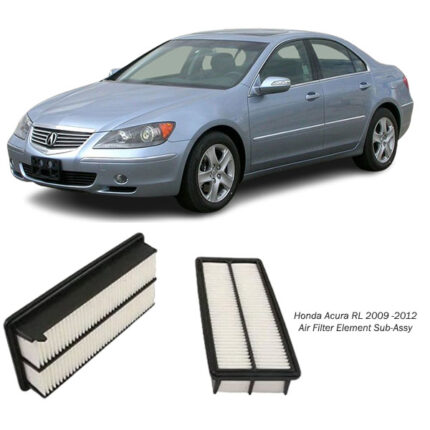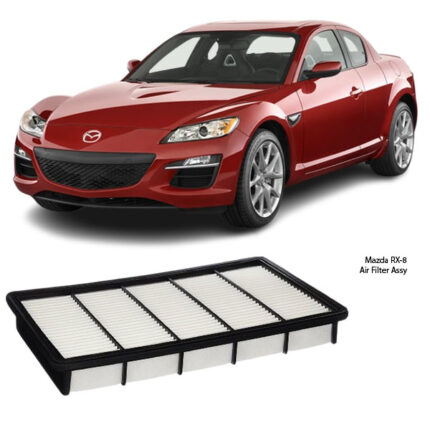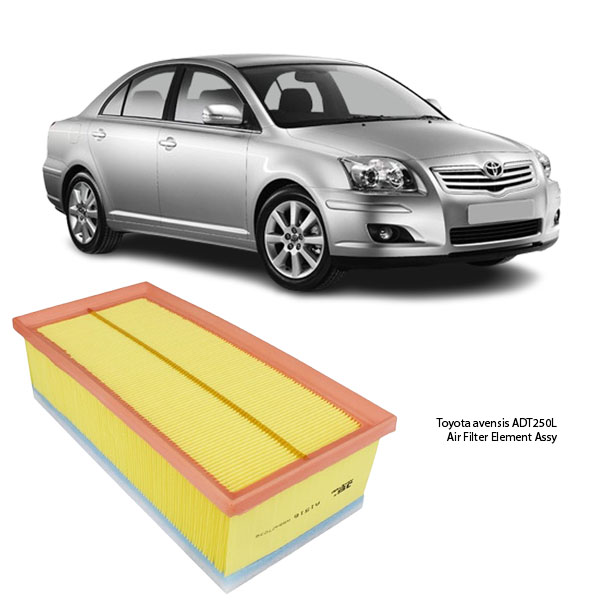-17%
Get Toyota Avensis ADT250L Air Filter Element Assy A1516 in Kenya
Every engine needs to breathe — just like you and me. And just like we prefer clean, fresh air for our lungs, your vehicle’s engine needs clean air to operate efficiently, powerfully, and reliably. That’s where the Air Filter Element Assembly comes in. Though it may seem like a small and simple component, it plays one of the most vital roles in your engine’s performance, longevity, and fuel efficiency.
Let’s dive into what this component does, why it matters, and how it protects the heart of your vehicle — the engine. 🚗❤️
What Is the Air Filter Element Assembly? 🔍
The Air Filter Element Assembly is a crucial part of your vehicle’s air intake system. Its main job is to filter the air before it enters the engine’s combustion chamber. Without it, your engine would be exposed to dust, dirt, debris, pollen, and even insects — all of which can cause major internal damage over time.
The assembly typically includes:
-
The filter element itself (made of paper, cotton, foam, or synthetic materials)
-
A sealing frame to ensure no unfiltered air bypasses the system
-
In some cases, a housing or box that holds the filter in place
It’s usually located under the hood in an airbox, connected to the intake ducting system. 🚘📦
Why Is Air Filtration Important for an Engine? 🌪️
Engines operate by burning a mixture of fuel and air. For combustion to happen efficiently:
-
The air needs to be clean
-
The air-to-fuel ratio must be optimal
-
The airflow should be smooth and unrestricted
Even tiny particles of dust can cause serious wear inside the engine. Over time, contaminants can damage:
-
Pistons and cylinders
-
Valves and valve seats
-
Mass Air Flow (MAF) sensors
-
Throttle bodies and intake valves
A clean air filter prevents these issues by acting as a barrier — allowing only clean, filtered air to enter the combustion chamber. 🛡️
How Does It Work? ⚙️
The process is simple but crucial:
-
Outside air enters through the air intake.
-
It passes through the air filter element, which traps dust, pollen, and other particles.
-
Clean air then flows into the intake manifold and on to the engine.
-
The engine mixes it with fuel, ignites it, and powers your drive. 🔥
The filter’s pleated design maximizes surface area, allowing it to trap more particles without restricting airflow. Some performance filters also feature multiple layers or oiled cotton gauze for superior filtration. 🧼
What Are the Benefits of a Good Air Filter? ✅
A quality air filter does more than just protect your engine. It has a direct impact on performance, fuel economy, and emissions.
Here’s what it brings to the table:
1. Engine Protection 🛡️
By blocking out contaminants, it prevents internal engine wear and keeps your combustion process clean and efficient.
2. Fuel Efficiency ⛽
A clogged or dirty filter reduces airflow, which can lead to poor fuel combustion and increased fuel consumption.
3. Improved Acceleration ⚡
Engines breathe easier with clean air. A fresh air filter can noticeably improve throttle response and power delivery.
4. Lower Emissions 🌍
Clean air contributes to cleaner combustion, reducing harmful exhaust emissions and helping your car pass emission tests.
5. Longer Engine Life 🧬
Keeping harmful particles out of the combustion chamber reduces long-term damage and extends engine life.
Signs Your Air Filter Element Needs Replacing 🔄
Although small, the air filter can’t be ignored. Like any filter, it gets dirty over time and loses its effectiveness.
Here are the common signs of a clogged or failing air filter:
-
🚗 Decreased acceleration or sluggish performance
-
🛢️ Reduced fuel efficiency
-
🌫️ Black smoke from the exhaust
-
⚠️ Check Engine Light (often triggered by airflow sensors)
-
🌀 Unusual engine noises, such as coughing or popping
-
🛠️ Visibly dirty filter when inspected
If you’re experiencing any of these symptoms, it might be time for a fresh air filter.
When Should You Replace It? ⏳
Most manufacturers recommend replacing the air filter every 15,000 to 30,000 kilometers, but this depends on:
-
Driving conditions (e.g., dusty roads vs. clean highways)
-
Climate and environment
-
Type of filter used
Tip: In dusty environments or off-road conditions, check it more frequently. A visual inspection can often tell you if it’s clogged or discolored.
Some vehicles have engine air filter sensors, but in most cases, it’s manual — so staying on schedule is key.
Types of Air Filter Materials 🧪
Air filters come in a few different materials, each with their own pros and cons:
1. Paper Filters
Most common. Affordable and efficient, but non-reusable.
🟢 Great filtration
🔴 Single-use only
2. Cotton Gauze Filters (Oiled or Dry)
High-performance and reusable (can be cleaned and re-oiled).
🟢 Better airflow and filtration
🔴 Requires cleaning and maintenance
3. Foam Filters
Often used in off-road or racing applications.
🟢 Excellent dust trapping
🔴 Can clog faster in urban conditions
Choose the type that fits your vehicle’s needs and driving style.
Installation & Maintenance 🧰
Replacing the air filter is usually a quick and easy DIY task. Here’s a simple guide:
-
Open the hood and locate the air filter housing.
-
Release the clips or screws.
-
Remove the old filter.
-
Clean the inside of the housing with a clean cloth.
-
Insert the new filter in the correct orientation.
-
Reattach the housing securely.
✅ No special tools needed
✅ Takes under 10 minutes
Some filters can be cleaned and reused (like performance filters), while most OEM-style paper filters are disposable. Always follow the manufacturer’s recommendations.
Air Filter Element Assy vs. Cabin Filter: Don’t Mix Them Up! 🚫
It’s easy to confuse the engine air filter with the cabin air filter, but they serve different purposes.
-
The engine air filter protects the engine
-
The cabin filter purifies the air inside the vehicle for passengers
Make sure you’re replacing the correct one when doing maintenance.
Conclusion: Let Your Engine Breathe Easy 💨❤️
The Air Filter Element Assembly may seem like a small, insignificant component — but its impact is massive. It’s the first line of defense for your engine, the guardian of combustion, and a key player in performance and efficiency.
By replacing it regularly and choosing a quality filter, you’re investing in:
-
Better engine performance
-
Lower fuel bills
-
Fewer repairs
-
A longer-lasting vehicle
🌬️ Clean air. Clean performance. Clean power.
🔧 Protect your engine — one breath at a time.
🚘 Change your air filter. Change your drive.
Follow us on Facebook for more parts.



